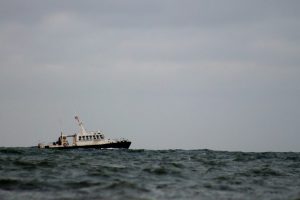As we approach Earth Day on April 22, expect to hear about St. Francis. If there is one figure in Catholic life inextricably linked with the care and protection of the planet, it is Francis of Assisi. He is often depicted with animals and is famously the author of the Canticle of the Creatures, which praises God by praising creation. Our familiarity with Francis’ works and image obscures the fact that in the arc of Catholic teaching on the natural world, Francis was very much an outlier.
The early Christian church looked to two key sources to explain what the relationship between humans and the natural world should be: the Bible and Aristotelian philosophy. In Genesis God creates the world and everything in it. Then God commands Adam and Eve to “fill the earth and conquer it.” Aristotle methodically studied and categorized all forms of life, concluding “nature does nothing in vain.” Humans were designed to do certain sorts of things, including plough the land, fish the seas, and eat animals, who in turn were designed to be delicious.
Drawing further from both Greek philosophy and Judaism, early Christians taught that people must use natural resources in moderation. Laws governed how heavy a load a horse could pull or how often a field should be cultivated. Still, though, nature existed to serve human needs.
In the early Middle Ages, as Christianity spread to France, Germany, and the British Isles, the church confronted people with a very different outlook. Among the polytheist tribes of northern Europe certain trees, groves, and springs held spiritual power.
Christian missionaries considered these beliefs idolatrous. Everyone, Christian or not, recognized the importance of a freshwater spring, so across the British Isles church leaders rededicated springs as holy wells and placed them under the protection of Mary or another saint. Often through a saint’s intercession, the water in these wells miraculously took on curative properties, and holy wells became popular pilgrimage sites for those seeking relief from illness or injury.
Elsewhere in medieval Europe, the church took a more aggressive stance against nature worship. As part of his eighth-century mission to evangelize Germany, St. Boniface famously felled Donar’s Oak, a tree the Germans believed was sacred to the god Thor. According to Boniface’s vita, as the saint began to chop away a strong wind picked up and blew the tree to the ground, where it neatly split into beams. Boniface then used these beams to build a chapel.
Nature could occasionally be the venue for a believer’s conversion. In eighth-century France, Hubert, a wealthy nobleman who retreated to the woods to spend all his time hunting after his wife died, was confronted by a stag. The stag, which had a crucifix between its antlers, told Hubert to stop his hunt and go seek religious instruction. Hubert did and ultimately became the first bishop of the Belgian city of Liege.
The stag also gave Hubert a lecture on how to be an ethical hunter. Hunters should only shoot when they are guaranteed a humane shot that will kill the animal quickly. Also, hunters should only kill animals that are old and can no longer breed. The stag’s lecture both stresses the need for moderation and good stewardship and reinforces the belief that nature exists to meet human needs.
Modern concerns about the effects of human activity on the environment have led many, including Pope Francis, to reconsider what it means to “fill the earth and conquer it.” For centuries though, Genesis probably sounded more like an aspiration than a command. When friends and family could fall victim to floods, fires, earthquakes, storms, plagues, or wild animals seemingly at random, many sought the intercession of saints who could mitigate the effects of the natural world.
The weather was so vital to agrarian life that it needed more than one intercessor. In England, this task fell to St. Swithun. A ninth-century bishop in the city of Winchester, Swithun asked to be buried outside the cathedral so that rain could fall upon his grave, and locals came to invoke him as protector against drought.
When the French needed good weather, they turned to the help of another saint, Medardus of Noyon. According to legend, when Medardus was child an eagle miraculously sheltered him under its wing to save Medardus from dying in a thunderstorm. In turn people invoked Medardus against bad weather, thanked him for good weather, and prayed to him as patron to all who worked under the open sky, which in medieval France was nearly everyone.
Today, humans have outsourced to technology what they used to place in the hands of saints like Swithun and Medardus. We can track storms and seek shelter ahead of time. We produce and store food surpluses, easily mitigating the ill effects of both droughts and floods.
Still, with increased carbon emissions and a rapidly warming planet we face ecological challenges that medieval saints could not have imagined. This is where Francis of Assisi provides some valuable instruction. Unlike most of his contemporaries, Francis taught that God calls humans to live with plants and animals, sun, wind, and rain not as masters or adversaries, but as brothers and sisters. As with siblings, it is a relationship of give and take.
Francis ate meat and used a basket of fish to pay for rooms the Franciscans rented from the community of San Benedetto. He also preached to birds and flowers, inviting them to join him in praising God as their common creator. Following a Franciscan ethic of fraternal love and reconciliation will go a long way in helping us create environmental policies that takes the needs of all creation, of all our siblings, into account.
Image: Louis Maniquet on Unsplash












Add comment